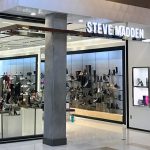In a move that is a sharp departure from its long-held position that it is NOT a sporting goods store, in appears that Galyans Trading Company has finally come to the conclusion that they are what most people say they are a big box sporting goods retailer.
With the categories that set them apart from Dicks and TSA representing the biggest drag on the results, GLYN said will it put more focus on the athletic end of the business and de-emphasize the outdoor and casual area of the stores. The shift puts them squarely into competition with two big guys that are busy carving up the same territory where Galyans hopes to play.
GLYN shares were down 7.5% for the week to close at $12.02 on Friday, after spiking 10.9% on Thursday.
Following former Outdoor SVP/GMM Denny Feldmans move to Dicks last month, Galyans has made the decision that his position will not be re-filled at that level, and will instead make it a DMM level position. As previously reported here, SVP/GMM Jeff Brown will handle all footwear and apparel for the whole store and Lindsay Rice will manage all hardlines as SVP/GMM.
The Outdoor segment currently represents about 48% of the business for Galyans.
Chairman and CEO Bob Mang said the company was “vastly over-assorted” in the area, and that the Outdoor and Outerwear categories “cost us” over the last couple of years. He went on to say that the company needed to reduce its reliance on “those portions of the business”. Galyans saw the outdoor equipment and outerwear categories perform 700 to 900 basis points worse than athletic on a comp basis.
GLYN must be looking at the results of their competition that showed categories like athletic equipment sales, paintball and fitness equipment leading some of the positive results. The strength of the basketball footwear and licensed apparel categories have been strong elsewhere as well.
Meanwhile, Galyans sees the increased expansion from Gander Mountain and Cabelas, with their larger, more interactive formats, eating up the business in the Outdoor end of things. Mang said, “Its hard for a sporting goods retailer to take on a category killer in that zone.”
Decreasing margins had a significant impact on the widening losses, with gross margin narrowing 290 basis points for the quarter due to higher markdowns and higher store occupancy costs. The company is getting a handle on inventory a bit more with inventory per store and per gross square foot declining by approximately 14% versus the year-ago period.
The average sale ticket for the quarter was off 4.5% from last year to $57.11, but average unit price at retail was $21.81, up 1.6% from last years Q3. Units per transaction were down 6.0%.
Private Label is about 13% to 15% of apparel sales, and Mang said he thought they could get it to 20% of the total business. Unfortunately, the companys highest penetration for PL is currently in casual apparel making up about a third of the business — an area he described as a “tough zone for us”. The CEO said that they dont have the number of stores needed to really leverage the Private Label business, pointing to their competitors that have the “billion dollar critical mass” to be successful.
As we previously reported in SEW_0345, GLYN hasnt reported a positive same-store sales quarter since Q2 2002. The retailer saw positive comps in athletic apparel and the SnowSports, Racquet Sports and Baseball hardgoods categories, while softness in casual apparel and outdoor apparel and equipment offset any positive gains, resulting in a 5.7% drop in comp store sales.
The company said that August and September were “significantly better” than the year-ago quarter, but the warmer weather in the MW and NE “dramatically impacted” results in the outdoor business in October.
Galyans looks for improving trends as the temperatures cool in the current quarter, with same-store sales forecasts now pegged to be flat to a low single-digit decline. Mang sees comps turning positive again “certainly in the first half of next year”.
The markets that Galyans is targeting surely require a re-thinking of the former strategy as newer locations like the new Roosevelt Fields store in Long Island, the Virginia Beach store and the Woodbridge store in North Jersey are positioned to attract a far different consumer than Plainfield, Indiana.
>>> Is the shift in model a real attempt to re-position the company or is it an attempt to get it closer to a potential suitors model?
>>> Now what do you do with all those climbing walls that have been the centerpiece of every store? That will make one hell of a shoe wall














